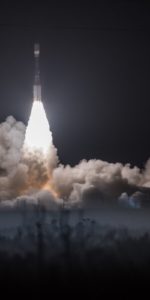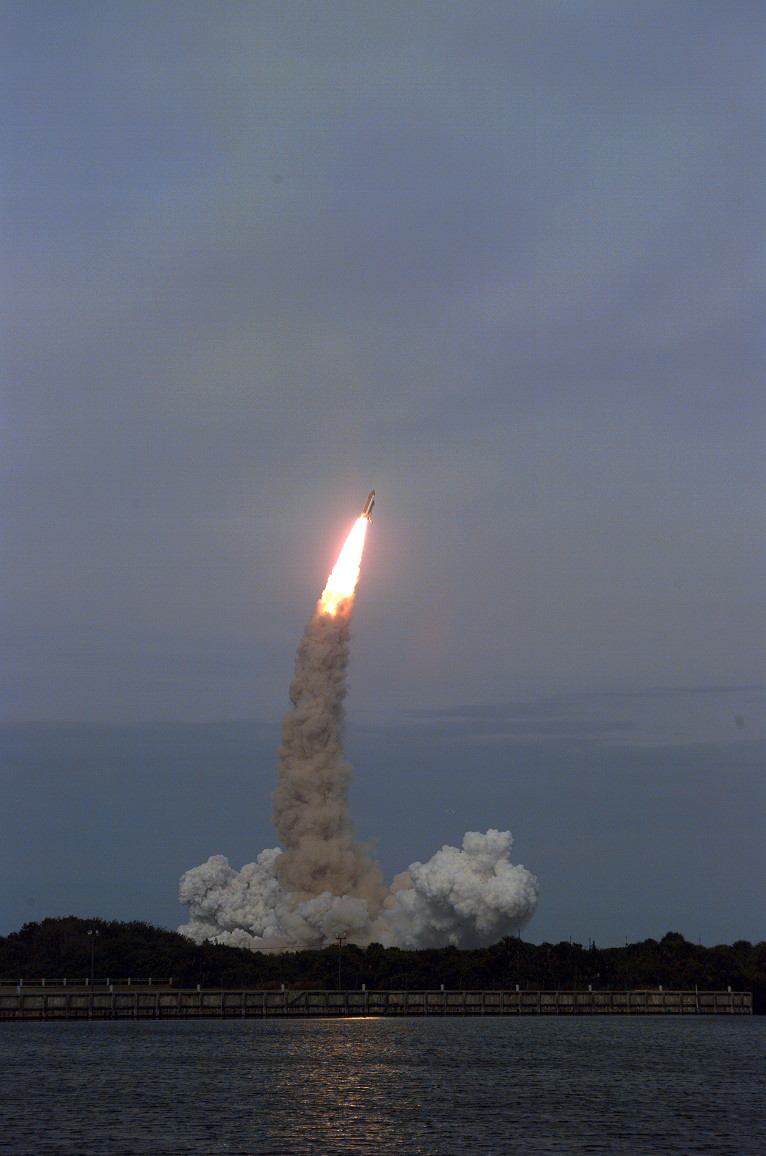
Twenty years ago today, on 19 November 1997, a shuttle mission with a difference rose from Pad 39B at the Kennedy Space Center (KSC) in Florida. It was the first flight from the 39B complex since January, and on STS-87 the orbiter Columbia was tasked with spending 16 days in space, deploying and retrieving satellites, conducting an expansive plate of scientific research and supporting spacewalks. Although STS-87 would prove bittersweet—following the failed deployment of its Spartan-201 solar physics satellite—it also broke new ground in several areas. It marked the first time that a Japanese citizen had performed a spacewalk and, during Columbia’s rise to orbit, it saw the first roll to a heads-up orientation in order to effect better communications with ground stations.
The six astronauts had been in training for almost a year. Commander Kevin Kregel, Pilot Steve Lindsey and Mission Specialists Kalpana Chawla, Winston Scott and Takao Doi had been named to STS-87 in November 1996, with Ukrainian Payload Specialist Leonid Kadenyuk joining them in May 1997. Their primary cargo was the fourth U.S. Microgravity Payload (USMP-4), laden with three materials processing and fluid physics investigations, with Spartan-201 due to be deployed—via the shuttle’s Remote Manipulator System (RMS) mechanical arm—for two days of observations of the solar corona. Scott and Doi would perform a spacewalk, whilst Chawla would become the first woman of Indian descent to launch into space and Kadenyuk would become the first ethnic representative of an independent Ukraine to fly into orbit.
Video Credit: NASA
Late on the morning of 19 November, the crew arrived at the base of Pad 39B, which had already carved an impressive—and tragic—reputation for itself in the annals of space exploration. First used on 18 May 1969 to deliver the Apollo 10 astronauts to the Moon, it later saw service to launch three Skylab crews and the U.S. portion of the Apollo-Soyuz Test Project (ASTP), before a decade-long period to ready it for shuttle operations. Its next launch saw tragic Mission 51L depart on 28 January 1986 and the pad was subsequently used for no fewer than 35 shuttle flights by the eve of STS-87. These included the first post-Challenger mission, the launch (and first servicing) of the Hubble Space Telescope, the Magellan, Galileo and Ulysses spacecraft, the maiden voyage of shuttle Endeavour and the longest shuttle flight in history. Astronauts and cosmonauts from the United States, Switzerland, Italy, Japan, Canada, France and Russia had launched from Pad 39B, with that figure set to expand on 19 November 1997 with Kadenyuk adding Ukraine to the list.
Preparations for launch had run exceptionally smoothly and the scheduled T-0 at 2:46 p.m. EST—on the opening of a 2.5-hour “window” for the day—allowed the astronauts to awaken at gentlemen’s hours. During suiting-up in the Operations & Checkout Building, Kregel had proudly displayed a cap for his son’s soccer team. The crew then departed to Pad 39B, whose ten-month down time had seen it receive new elevators, improved electrical cables and other enhancements. “We have a lot of new paint out there,” quipped shuttle operations manager Bob Sieck. “It’s our goal to burn off some of that paint…with an on-time launch!”
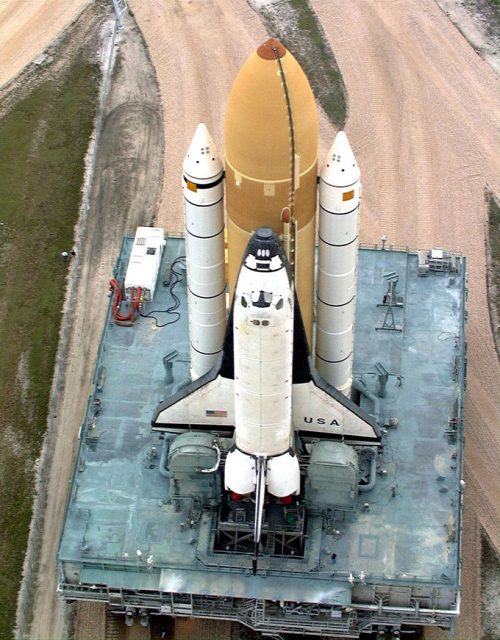
Despite an iffy, 60-percent chance of acceptable weather, precisely at 2:46 p.m., Columbia rose from Earth on the 24th mission of her career. Powered uphill by the combined impulse of her three Space Shuttle Main Engines (SSMEs) and twin Solid Rocket Boosters (SRBs), the opening minutes of STS-87 seemed indistinct from other shuttle flights. “And liftoff of Space Shuttle Columbia,” exulted Kennedy Space Center (KSC) announcer George Diller, “on a mission combining science and the practical applications of space.”
It was the eighth and final shuttle flight of 1997, closing out an impressive year which had seen three visits to Russia’s Mir space station, a uniquely twice-flown Spacelab mission and a long-awaited upgrade of the Hubble Space Telescope (HST). Never again would the shuttle fly so many times in a single calendar year. As shrinking workforce budgets, the loss of Columbia in February 2003 and a delayed International Space Station (ISS) construction manifest took their toll, the fleet would support no more than six missions annually from 1998 until the end of its career in 2011.
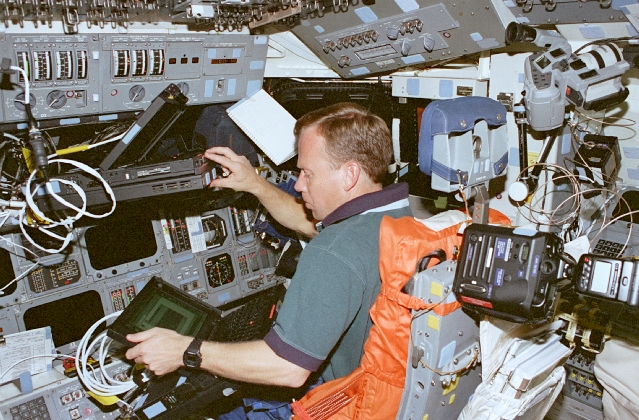
Two minutes after liftoff, Columbia shed her twin SRBs and continued to orbit under the thrust of her main engines. Then, at six minutes, something never-before-tried took place. Over a 20-second period, the on-board General Purpose Computers (GPCs) rolled the shuttle to the left by 180 degrees, transitioning the crew from a “heads-down” to a “heads-up” orientation. In doing so, the exercise would allow NASA to communicate with shuttle crews via the Tracking and Data Relay Satellite (TDRSS), up to 2.5 minutes sooner than normal, and would eliminate the need for a ground station in Bermuda. This was expected save the space agency upwards of $5 million per annum.
Columbia’s computers pulled off the maneuver effortlessly and the ship rolled at 5 degrees per second, creating a minimal 15-second communications loss with Mission Control. “In the roll, we transitioned from ground station telemetry to TDRS telemetry,” explained Launch Integration Manager and former shuttle commander Don McMonagle. “That transition occurred in less than 15 seconds, which is precisely as we expected. We’re very satisfied that the unique aspect of this ascent trajectory went as planned.” The maneuver, which was to be used on future low-inclination flights, allowed Columbia’s cockpit antennas to lock onto the overhead TDRS. At the time, the shuttle was 300 miles (480 km) downrange of KSC and racing into orbit at an altitude of about 68 miles (110 km), out of range of long-distance tracking cameras.
“Nice roll,” radioed Capcom Scott “Doc” Horowitz from Mission Control.
“Copy and concur,” replied Kregel from the commander’s seat.
Interestingly, since the entire roll was GPC-led, the astronauts had no idea if they would roll to the left or to the right, until it actually happened. That decision was made in real time, based on incoming velocity and orientation data. At the time, the shuttle was traveling in excess of 8,190 mph (13,180 km/h). Since it occurred outside the “sensible” atmosphere, it was not deemed risky and aerodynamic loads on the vehicle did not pose a problem. Before launch, Kregel had likened it to “an E-ticket ride”.
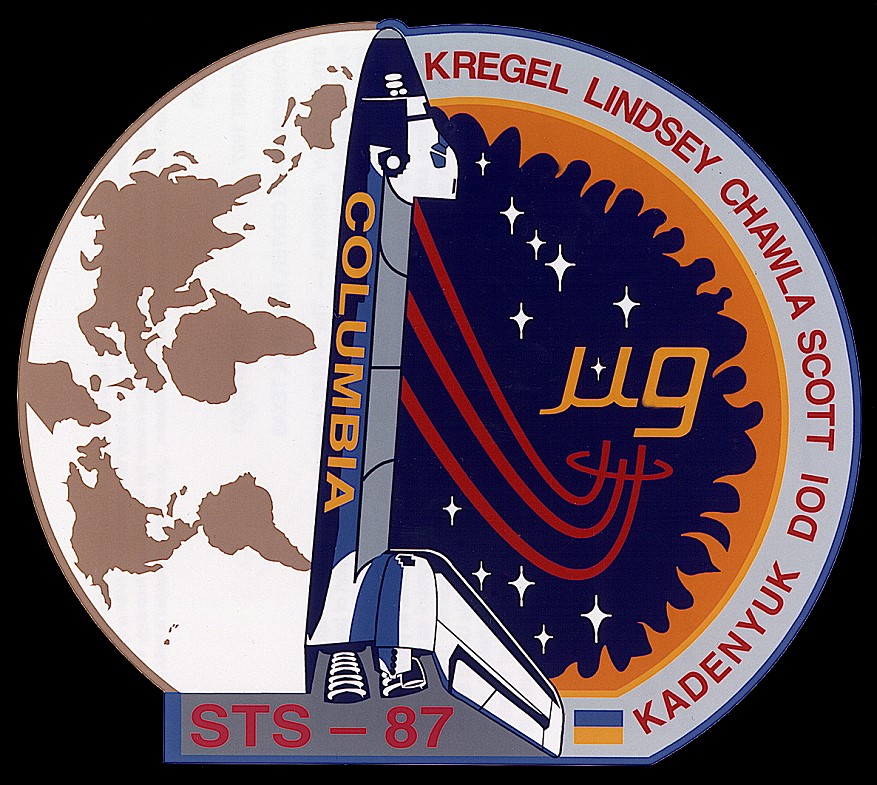
“We had to do a fair amount of analysis to ensure that we weren’t doing anything dumb,” recalled STS-87 Flight Director Wayne Hale. “One thing we didn’t want to perturb was the [Return to Launch Site] abort mode. That is a fairly intricate maneuver, it’s been analysed to death and we spent a lot of money making sure it would work if we ever had to do that and it is based on a heads-down trajectory. We picked a time that was after Negative Return.” The analysis showed that, even if Columbia’s crew suffered an electrical system failure or two SSME shutdowns, their ship would still remain controllable.
Although Kregel had flown twice before, his right-seater, Steve Lindsey, was embarking on his first mission. And the roll presented Lindsey with a jaw-dropping first view of Earth from the edge of space. “We’re nose-high, so all you can see is blue, blue, blue…and then black,” he remembered later. “But about six minutes into the flight, we do a roll to heads-up. During that, the roll to heads-up is really the first time you get to see the Earth from space. I will never forget that first roll. It rolled my way, so I could see the Earth coming up and seeing the Earth from space for the first time was very memorable. Things like your home town are very memorable, but just seeing the beauty of the Earth and that it’s actually round, like they say in the geography books, that’s something I won’t ever, ever forget.”
FOLLOW AmericaSpace on Facebook!
.




